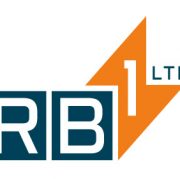What Are the Main Types of Electrical Bypasses and Their Applications?
Electrical bypass systems are essential in keeping industrial and commercial facilities across the UK running smoothly. They provide a way to maintain power continuity when critical components require servicing or when unexpected faults occur.
But not all bypasses are the same. Different types are designed for different applications, from heavy-duty manufacturing plants to sensitive data centres.
At RB1, we supply and design electrical bypass solutions tailored to UK businesses, ensuring compliance with safety standards like BS EN 61439 while maximising efficiency and uptime.
In this blog, we’ll explain the main types of electrical bypasses and where each one is typically used.
Why Electrical Bypasses Are Important
Even a short loss of power can cause major disruption, including:
- Production downtime in factories
- Equipment damage from sudden outages
- Data loss or corruption in IT systems
- Safety risks for staff and facilities
Electrical bypasses provide a controlled, safe way to reroute electricity around a circuit or device, ensuring critical systems remain online during maintenance or unexpected failures.
The Main Types of Electrical Bypasses
1. Manual Bypass
A manual bypass requires an operator to physically switch power from the main system to the bypass route.
- ✅ Applications: Small facilities, commercial sites, or non-critical systems where short planned interruptions are acceptable.
- ✅ Advantages: Cost-effective, straightforward to operate.
- ⚠️ Limitations: Relies on human intervention and is unsuitable for critical environments where downtime is unacceptable.
2. Automatic Bypass
An automatic bypass system switches power instantly if a fault is detected or maintenance is required.
- ✅ Applications: Data centres, hospitals, large manufacturing plants, and critical infrastructure.
- ✅ Advantages: Seamless operation with no interruption, increased reliability, safer for sensitive equipment.
- ⚠️ Limitations: Higher upfront cost compared to manual systems.
3. Partial Bypass
A partial bypass allows power to be diverted only around specific circuits or equipment, while the rest of the system continues running.
- ✅ Applications: Facilities where certain equipment needs regular servicing without shutting down the entire system.
- ✅ Advantages: Flexibility, targeted maintenance without full system interruption.
- ⚠️ Limitations: Doesn’t protect the entire system—only selected circuits.
4. Full Bypass
A full bypass reroutes all power around the primary system, allowing complete maintenance or upgrades.
- ✅ Applications: Large-scale maintenance projects, system upgrades, or when replacing key equipment.
- ✅ Advantages: Enables major servicing while keeping power supply uninterrupted.
- ⚠️ Limitations: More complex and requires careful planning.
5. Static Transfer Switch (STS) Bypass
A more advanced bypass option, often used with UPS (Uninterruptible Power Supply) systems. An STS bypass instantly transfers load to an alternate power source without any break.
- ✅ Applications: Data centres, telecoms, and mission-critical operations.
- ✅ Advantages: Millisecond-level switching, no interruption to sensitive IT equipment.
- ⚠️ Limitations: Requires investment in high-quality systems and monitoring.
Matching the Right Bypass to the Application
Choosing the right bypass depends on:
- The size and complexity of your electrical system
- Whether your facility can tolerate planned downtime
- The criticality of equipment being protected
- Compliance requirements under UK safety regulations
For example:
- A manufacturing plant may use a full bypass for system upgrades.
- A data centre requires an automatic or STS bypass for uninterrupted operations.
- A small commercial facility may be best served with a manual bypass.
At RB1, we help businesses across the UK choose the right bypass system based on operational needs, compliance, and long-term efficiency.
FAQs: Electrical Bypass Types and Applications
Q1: Which type of electrical bypass is best for UK data centres?
A1: Automatic or STS bypasses are best, as they provide seamless switching without downtime.
Q2: Can a manual bypass be upgraded to automatic later?
A2: Yes, in many cases RB1 can retrofit or upgrade systems to provide automatic switching capabilities.
Q3: Do all bypasses comply with UK standards?
A3: Not always. It’s essential to choose a manufacturer like RB1, whose systems comply with BS EN 61439 and UK safety requirements.
Conclusion
From manual bypasses for smaller facilities to automatic and STS systems for mission-critical environments, there’s a solution for every industrial application. Choosing the right bypass ensures your operations remain safe, compliant, and efficient.
At RB1, we provide expert guidance and supply high-performance bypass systems across the UK.
👉 Contact us today to find the right electrical bypass for your facility.

Leave a Reply
Want to join the discussion?Feel free to contribute!